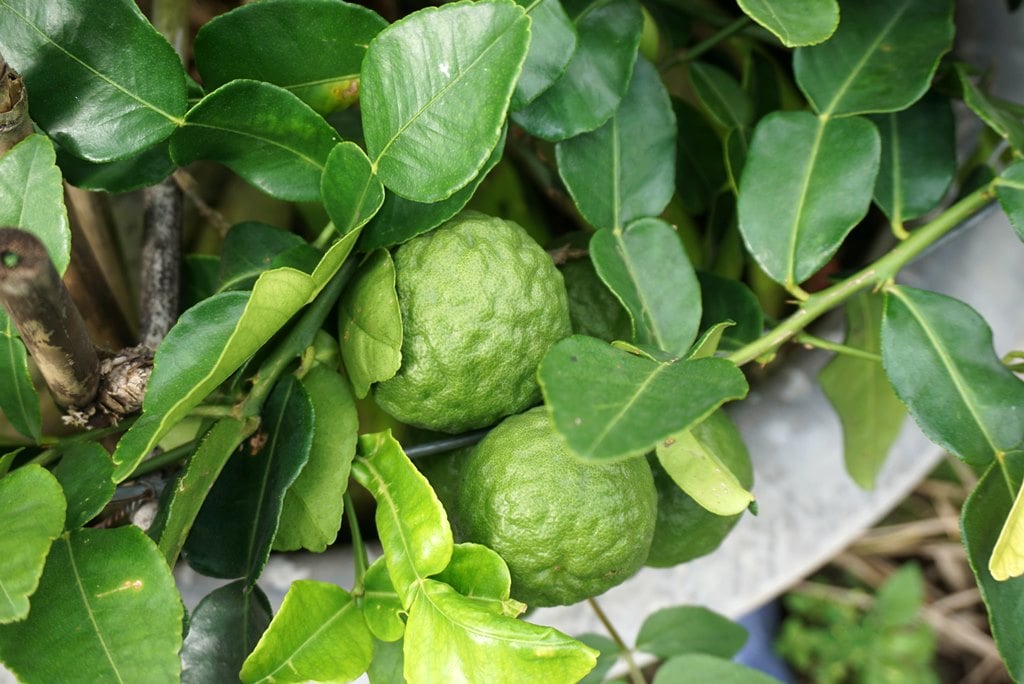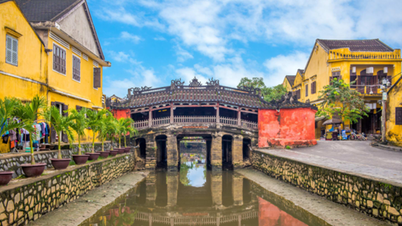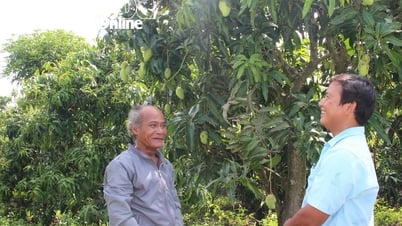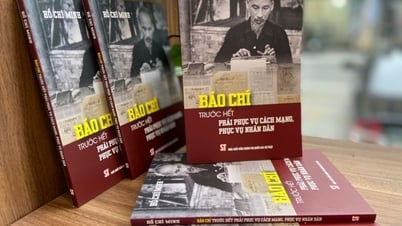The fruit of the Chuc tree is called Kôt - Sôt in Khmer, some places call it chanh thai, related to the lemon tree, tall and very thorny. The unique difference is that the Chuc fruit has a rough outer shell, the leaves are narrowed like the figure 8, and especially the aroma is stronger than paper lemon. The Chuc fruit has a sour, slightly spicy taste, the juice is used as a spice or to prepare delicious and attractive dishes. Because of this characteristic, typical dishes of the Bay Nui region only need to use the leaves or Chuc fruit to be loved by diners.
Previously, the Chuc tree grew naturally in the forest, a small number were planted in the villages and hamlets of the Khmer ethnic minority people to serve the needs of food and medicine. The tree bears fruit all year round, the most abundant in the rainy season, and a large quantity is harvested for sale. The attraction of tourism has helped many people discover the Chuc fruit and buy it more and more. Since then, in addition to the two mountainous localities, neighboring districts have also developed the Chuc growing model, mainly selling seedlings and leaves. Those who want to use the fruit must definitely go to the mountainous areas, because the Chuc fruit here will have a distinctly rich flavor compared to that grown elsewhere.
In front of Chau Si Tha's house (Tri Ton town) there are two 10-year-old custard apple trees, enough for the whole neighborhood to eat. Mr. Tha said that depending on the soil, some trees bear fruit after 5 years of planting, while others have to wait longer. The custard apple tree is drought-resistant, most of the trees grow in mountainous soil, develop strongly, and do not even need care. Currently, to shorten the time, many people who like this type of tree can buy grafted seedlings that will bear fruit faster. In places where Khmer ethnic minorities live, along the road there are often a few small baskets selling custard apples, wild vegetables, bamboo shoots... all of which are fresh, clean "home-grown" foods.
In the villages and hamlets of the Khmer ethnic minority, the Chuc tree is no longer present in many places. There are trees that are several decades old, bearing abundant fruit and spreading branches and canopies. Mature trees can produce 30-40kg of fruit during the rainy months, selling for 40,000-50,000 VND/kg; the Chuc leaves are sold for less than half that. In the off-season, Chuc fruit is still in high demand, sometimes priced at over 100,000 VND/kg. However, few Khmer ethnic minority people grow Chuc for sale, but mainly use it in daily meals.
Connoisseurs of mountain cuisine will not ignore dishes with the flavor of the fruit as a highlight. Typically, the dish of chicken burned with the leaves of the fruit ...
The peel of the fruit contains a lot of essential oils. When eaten, people will squeeze it upside down to get all the juice and aromatic essential oils, which are both delicious and flavorful without being bitter. The aroma of the fruit helps to remove the fishy smell of dishes containing high protein content, such as: frog, beef, organs, chicken... Thanks to that, Tri Ton beef porridge with its own flavor of the mountains and forests is listed among the specialties that visitors from far away must enjoy. Or grilled frog, although elaborately prepared with many ingredients, the highlight is still the characteristic smell of the fruit mixed in the meat and juice of the fruit in the accompanying dipping sauce.
Due to its unique and outstanding aroma, in addition to being used as a spice for dishes, the fruit of the Chuc tree is currently being researched by many people to extract essential oils, make soap, shampoo, etc. Mr. Huynh Van Duyen (Ba Chuc town) grows 2,000 Chuc trees to supply leaves and fruits to large buyers both inside and outside the province for the same purpose. Some restaurant businesses also process it in a simple way by making chili salt with dry roasted Chuc, which is popular all year round. Depending on the conditions and methods, people have an additional source of income from this endemic tree that is familiar in the mountainous region.
MY HANH
Source: https://baoangiang.com.vn/huong-chuc-bay-nui-a422493.html

























































































Comment (0)